Kitty Genovese and the 'bystander effect'
- Published
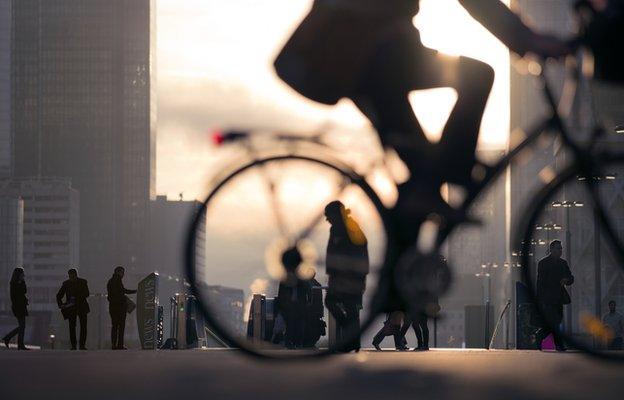
Would you come to the rescue of a stranger who was being attacked? We may say we would, but in reality things can be different. Is this human nature, or a behaviour that can be taught?
Early one morning in March 1964, a young woman called Kitty Genovese returned home to her New York apartment and was attacked and killed by an armed assailant.
According to newspaper reports at the time, dozens of neighbours watched the murder take place just outside their windows - but no-one came to her aid.
Genovese's fate, they claimed, was symbolic of the cold and careless society we had come to inhabit, and painted a stark picture of social decay.
Although the precise details have since been called into question, the case has come to represent what social scientists call the "bystander effect", or the "volunteer's dilemma".
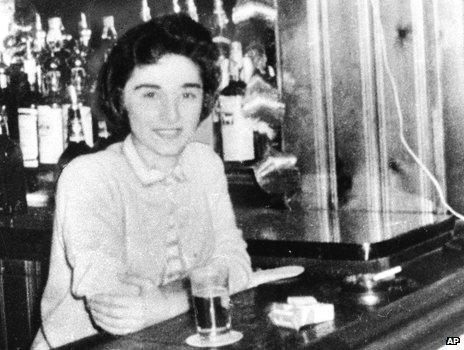
The murder of Kitty Genovese in 1964 sparked the idea of the "bystander effect"
When surrounded by other people, the theory suggests, we become less likely to intervene and help our fellow citizens.
Research being carried out in the US and the UK, however, is testing whether this type of behaviour is hardwired into our nature or can be modified through training.
In a recent experiment, a team of scientists from Northeastern University in Boston advertised a meditation class and recruited a set of volunteers. Half of the respondents went along to the sessions, while the other half were told that they were on a waiting list instead.
For those who attended, the course involved different forms of compassion meditation which has its roots in Tibetan Buddhism. In essence, the classes were designed to encourage people to pick up on shared characteristics rather than their differences, says social psychology professor David DeSteno, who helped carry out the research.
Once the classes were complete, all of the respondents - including those still on the waiting list - were subject to a real-world test that they were unaware was taking place.
One by one, they were called to attend a meeting. Before it began, they entered a waiting room with three chairs. Two were occupied by actors, leading the participant to sit down at the third.
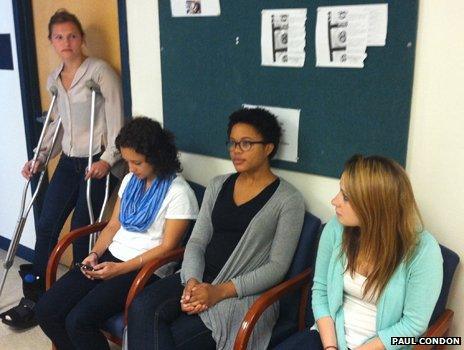
A posed photograph of the compassion test conducted by David DeSteno's team
"After a couple of minutes, a woman would walk in on crutches - wincing with pain - and lean against the wall. The actors looked away and didn't give up their chairs," says DeSteno.
Of those who had received the compassion training, around half stood up to offer their chair to the woman, and for those who had not, the figure was just 15%.
They concluded that our willingness to help strangers is flexible, and can be shaped by small changes in perception, external.
"The underlying argument in all of this is that if we can get people to see similarities instead of differences, their willingness to help will increase," he says.
In northern California, another group of researchers has turned to virtual reality to investigate what causes us to help other people, external.
"A lot of the work we do asks the question 'If I give someone a very intense virtual experience, how does it affect their behaviour in the real world?'" says Jeremy Bailenson, a professor at Stanford University's human interaction laboratory.
The team devised a 'Superman' test in which subjects donned virtual reality goggles and were dropped into an evacuated city.
Some were told that they had superhuman powers, and had to deliver a shot of insulin to a diabetic child stranded somewhere nearby. "You lift your arms above your head to fly, and rotate your body to go in another direction - just like Superman in the movies," says Bailenson.
Other participants were taken on a tourists' helicopter ride around the city instead.
Once the child had been found, or the helicopter ride was complete, the participants sat through an interview that they were not told was part of the experiment. Halfway through the meeting, the researcher would knock over a pot of stationery on a desk.
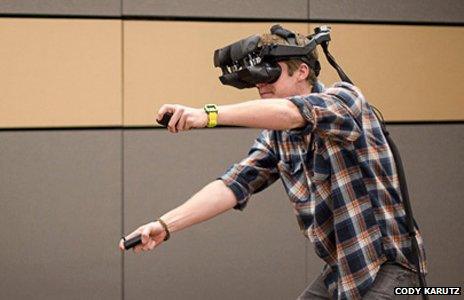
The 'Superman' virtual reality test conducted by Jeremy Bailenson and his team
Interviewees who had been given superhuman powers in the virtual world rushed to help clean up the mess more often than those who had not - many of whom did nothing at all.
The findings suggest that the more empowered people feel, the greater their propensity to show kindness to others.
In the UK, another study has attempted to go one step further - by introducing the idea of aggression and violence into the equation.
Mel Slater, professor of virtual environments at University College London, hoped to recreate the conditions for the "bystander effect" in a controlled setting.
Using another form of virtual reality, the participants - 40 fans of Arsenal football club - were each placed in a room in which the floor and most of the walls were made up of video screens.
The virtual environment was a pub, where the subjects were approached and befriended by a virtual customer at the bar.
In some instances the customer was a plain-clothed member of the public, but in others they were a fellow Arsenal fan who engaged in a discussion about the team's recent fortunes.
After a few minutes, a second virtual drinker would wander over and start abusing the participant's new acquaintance, verbally at first, and then physically as well.
"In both cases we recorded how many times the subject tried to intervene, both physically and with speech," says Slater.
Although they had only just met, the participant leapt to the aid of their fellow Arsenal fan far more often than they did for the plain-clothed stranger.
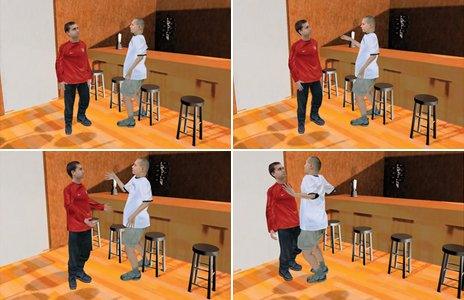
Virtual images of the University College of London bystander study
According to some researchers, the Kitty Genovese case suggested that the more people were watching, the less likely they were to intervene.
"It is more complicated than that," says Slater. "It's also about how much we identify with others."
The results of his team's work chime with that of DeSteno in Boston, which concluded that we look for "any marker of similarity" when taking decisions about who to help.
"All social living involves trade-offs between short-term and long-term gains. What we're interested in is how we can nudge the mind to look to the long-term," says DeSteno.
Does he think that Genovese could really have been saved had her neighbours been trained in compassion?
"We don't have that data, so we can't say for sure," he says. "But my hunch is yes, it would have likely increased their willingness to help."
There are more volunteering stories in the BBC News series Making Time
You can follow the Magazine on Twitter, external and on Facebook, external